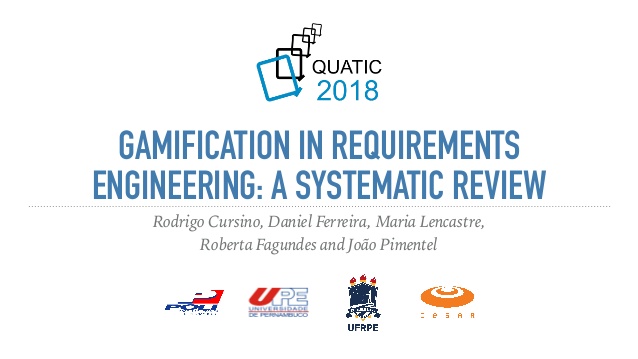20 Nov Capital Work In Progress CWIP Stock In Process SIP and Stock
Contents
Closing balances of all nominal accounts, relating to the remaining income and expenses are transferred to Profit & Loss A/c. Debit side of the Profit & Loss A/c shows expenses like Administrative Expenses, Selling Expenses, Financial Expenses, Depreciation and other Unusual Expenses and Losses. Credit side of the Profit & Loss A/c shows Other Business Incomes and Gains. The balance of the Profit & Loss A/c shows the result of business operations during the year.
On the other hand, the expectant stock comprises raw materials or completed goods that a company acquires in response to sales and production trends. Work In Progress or WIP Inventory indicates the total items in production, including components or raw materials, workforce, packaging materials and even overhead. Accounting Managers find it an uphill task to assign correct cost value to the items in the Work-In-Progress stage. This happens because the particular item is prone to changes in the costs and processes as it moves to the next stage. It is recommended to transfer the WIP items to the finished stage before the accounting process.
Capital Work In Progress (CWIP) Stock In Process (SIP) and Stock
The accounting process starts from recording all business transactions in set of books. At the end of accounting year, a statement is proposed listing all balances namely Debit & Credit. WIP is calculated by adding the cost of materials produced, costs invested in labor expenses and the cost incurred in receiving the final product. Devilish Decals is a graphic design company that makes custom decals for skates, skateboards, snowboards and more.
- Work in Processmeans goods to be sold by the Loan Parties in the ordinary course of business, which are currently in the process of being manufactured.
- Work in process was more popular for a short period in the 20th century in American English, although today work in progress is again the preferred term.
- Unearthing financial misstatements involving inventory overstatements is less straightforward than catching people who directly steal physical assets.
- Similarly in the case of SIP, the process of manufacturing in the terms of time to be kept in mind while decoding about the genuineness of SIP.
- The additional inventory that a corporation acquires needed for unexpected situations is known as safety stock.
Some people consider not storing the WIP and keeping it on the assembly line instead. While this might solve your storage problem, it creates a backlog in the production line and may even create customer dissatisfaction if you cannot supply orders in time. As indicated earlier, the beginning WIP of a company is derived from the ending WIP inventory of the immediate previous WIP inventory. The frequency of WIP reporting generally depends on the type of company involved. While public companies must adhere to strict reporting guidelines, private companies typically have fewer reporting requirements, though they are still obliged to value items for tax reasons. For some, work-in-process refers to products that move from raw materials to finished product in a short period.
FINAL ACCOUNTS OF
The difference between the work in process in the current period and the work in process in the pervious period corresponds to the inventory change of unfinished products. All of the following terms are under the umbrellas of manufacturing inventory. Taking the time to better understand WIP inventory can give you a deeper understanding of your supply chain management, which means better optimization and more revenue. Then you find that you have invested $225,000 in production costs for the quarter, and the total value of your finished goods is $215,000. You’re in the business of custom, hand-made goods, and you acquire raw materials to assemble your products yourself. Your beginning work in process inventory is your previous accounting period’s ending WIP inventory.
Work in progress and work in process are variants of a noun phrase that means a job or project that isn’t finished yet. Any manufacturing company that is concerned with ensuring its production level is optimal will automatically have to ensure it keeps minimal WIP inventory levels. It is important to determine the value of the cost of goods sold using the records of your previous year’s accounting period. Inventory management refers to tracking commodities, essential materials, and raw ingredients that a corporation consumes or distributes. Inventory management is done to make sure and check if a business has adequate merchandise in hand and to recognise a shortfall. However, less quality in production may cause defective items that may not lead to the expected revenue.
Therefore, the formula for calculating finished goods inventory has been explained above with the help of an example. Here is an example of calculating finished goods inventory to better understand the formula. Inventories also encompass finished goods produced, or work in progress being produced, by the entity and include materials and supplies awaiting use in the production process.

Mike launched his surety career with Aetna Casualty and Surety Company, where he handled the marketing and underwriting of all lines of bond business.
CLOSING ENTRIES:
Otherwise, it will amount to taking credit for anticipated or unrealised profit which is against the accounting principle of “conservatism.” Unrealised profit included should be considered as Stock Reserve. The primary function of accounting is to accumulate accounting data in a manual that the amount of profit or loss suffered during the period can be determined along with status of the business in financial terms. On an organization’s balance sheet, inventory is a critical and valuable asset. When an inventory sale has been made, its carrying cost or income statement is sent to the COGS, which stands for the cost of goods sold. Another reason to classify WIP inventory is because it’s a big factor in the valuation of your business. If you’re applying for a loan, the lender may be hesitant to count WIP inventory as collateral (even though it’s tallied as an asset) since it’s not very liquid.
What is WIP in accounts?
What Does Work-in-Progress Mean in Accounting? In supply-chain management, work-in-progress (WIP) refers to goods that are partially completed. They may also be referred to as in-process inventory.
If you are using transfer prices, you can update work in process at actual cost in multiple valuation views. The line IDs for WIP calculation are normally grouped the same way as the cost components in Product Cost Planning. This means that the same cost element interval is usually assigned to the line ID raw materialsas is assigned to the cost component raw materials. In the case of accounting and preparing a balance sheet, raw materials are recorded as inventory assets that are a part of any company’s current assets.
Inventory is one of the most important for an organisation since inventory turnover is the primary source of revenue production and, as a result, profitability for the company’s shareholders. When you know the exact amount of finished goods inventory levels that you need to maintain in your warehouse, for the time being, it reduces the costs and waste for your company. Knowing your company’s optimal inventory value will help you overcome the problem of overstocking and stock-outs. Also, it will save the costs of acquiring massive warehouses and maintaining the present inventory. Beginning inventory is the value of a company’s goods at the start or beginning of an accounting period. It is the inventory that a company can put up for sale to generate revenue.
Inventory Turnover in E-commerce
Cost of goods sold is defined as the direct costs attributable to the production of the goods sold in a company. Minimizing WIP inventory before reporting it is both standard and necessary since it is difficult to estimate the percentage of completion for an inventory asset. Work in Processmeans goods to be sold by the Loan Parties in the ordinary course of business, which are currently in the process of being manufactured. This inventory cycle repeats itself over and over during the year for manufacturers. For example, textile manufacturing companies may produce many finished goods such as silk and cotton.
Does WIP have depreciation?
(iv) Although Construction (WIP) is recorded as a non-current asset, it is not depreciated or subject to revaluation requirements until the asset is complete and first put into use or held ready for use by the relevant Agency.
These costs are eventually transferred to the finished goods account and transferred to the cost of sales. The company eventually evaluates and earns these costs in manufacturing final accounts wip indicates when the product is sold to customers. Inventory is one of a company’s most significant current assets, and finished goods inventory contributes to it.
One thought on “Capital Work In Progress (CWIP) Stock In Process (SIP) and Stock”
It is also important to understand and analyse the CWIP in forensic audit, as CWIP forms part of the tangible net worth of an entity. Therefore, to know actual TNW and real position of the TNW, the CWIP requires to be looked into. The understanding of the CWIP and how to look and analyse the same, is important in forensic audit.

Since WIP inventory takes up space and can’t be sold for a profit, it’s generally a best practice for product-based businesses to minimize the amount of WIP inventory they have on hand. Product Fulfillment Solutions’ technology and industry expertise allow you to better manage all of your inventory and orders. You work with multiple suppliers to source materials then send them to a manufacturer to assemble your finished goods. Supply chain and managing all types of inventory are established fields of expertise now. And one thing that these professions agree on is that it’s usually best to minimize work in process inventory.
Similarly, a company has a lot of under-stocked items, which is also not an ideal finished goods inventory. Such a scenario indicates that the company cannot supply its customers with the needs and wants of the purchasers. Stockouts show that customers are ready to buy the items but the company cannot fulfill orders as there is not much stock in the warehouse to address customer demands. Hence the scenario of stockouts is also not an ideal finished goods inventory.

The capital work in progress , stock in process and stock of raw materials, finished goods etc. – are the 3 important items of balance sheet of any entity. Considering the similarities in CWIP & SIP and SIP & Stock, all 3 items are covered in this chapter for the purpose of better understanding and unlocking https://1investing.in/ the secrets hidden for forensic audit. ABC already has $100,000 worth of raw material inventory left over from the previous year and makes additional purchases of $300,000 to manufacture new television sets for this year. At the end of the year, it is left with unfinished inventory worth $150,000.


Sorry, the comment form is closed at this time.